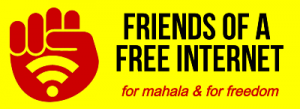ICASA has published the Universal Service Obligations fo the successful bidders in the upcoming spectrum auction in the Government Gazette of 10 December 2021.
According to the Overview (1.7) government “policies remain as the universal provisions of broadband services including in particular, ensuring connectivity for public services i.e. education, health and government services. The policies further seek to operationalise the New Growth Path and the Strategic Integrated Project (SIP) 15, which deals with expanding access to communications technology by ensuring universal service and access to affordable and secure broadband services by all South Africans, prioritising rural and under-serviced areas in order to stimulate economic growth.”
Zero rating NPO content
According to the Social Obligations (12.5.1) “A Licensee assigned spectrum through the auction process will be required to zero-rate all the Mobile Content provided by Public Benefit Organisations including .gov.za websites. The Authority will consult with the successful bidders and relevant stakeholders to ensure that the zero-rating social obligation is implemented without illegitimate use of URL’s during the licensing stage.”
Covering the country
According to the Coverage Obligation (12.2) within five (5) years of license issue, or within 5 years from the date the digital migration process is completed:
In respect of 700MHz or 800MHz licenses, Tier-1 operators who wins sub-1GHz spectrum other than the Coverage Lot must expand coverage at a minimum 97%of the population and Tier-2 operators that cover less than 80% of the population with IMT services must expand such coverage to at least 80% of the population
A Tier 1 or Tier 2 operator who acquire 2x10MHz (on IMT800) Coverage Lot will be required to comply with coverage obligations ofat least 99.8% of the population.
An “Outside-In” approach is prescribed. This means areas with the least current coverage must be connected first: “First build broadband coverage in the first batch of least covered of “underserviced areas” and/or municipalities (First Batch 3, then Batch 2 Municipalities), before proceeding to roll out finally to major cities and towns of South Africa (Batch 1).”
According to the Social Obligations (12.5.2) “in support of the SA Connect Policy that applicants that obtains spectrum through this process be subjected to obligations to connect public service institutions”.
Specifically this incudes 18 520 public schools, 3967 Government clinics, 1764 Government hospitals, 567 Unconnected police stations, and 8241 Traditional authority offices (tribal offices).
“The connectivity obligation should be implemented within 36-months from the date of the issuance of the radio frequency spectrum licences and the connectivity targets will be shared amongst successful bidders. The Authority will coordinate with the relevant stakeholders to finalise the implementation with successful applicants operators and the Authority will oversee compliance on annual basis”.
READ THE GAZETTE:








